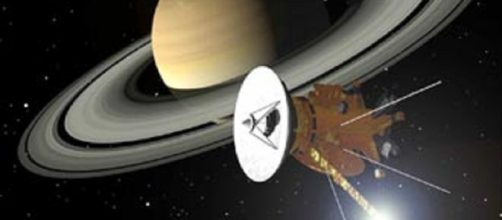Cassini, the joint NASA-European Agency space probe that has been orbiting Saturn for the past 13 years, is preparing its final death dive into the ringed planet. After Cassini is gone, the next big Outer Planets explorer will be the Europa Clipper, which will explore Jupiter’s ice bound the moon. However, scientists are already dreaming about what could follow in the exploration of the outer planets.
Visit Titan and Enceladus
Cassini discovered that two of Saturn’s moons, Titan and Enceladus, are very interesting indeed from a scientific perspective.
Titan is a shrouded world with seas and rivers of liquid hydrocarbons. Enceladus is an ice shrouded world, like Europa, which likely contains a warm water ocean beneath its surface that may teem with life. Visiting one or both worlds close up with probes using modern instruments would be a high priority.
Uranus and Neptune as the next targets of exploration
The two so-called ice giants, Uranus and Neptune, that orbit beyond Saturn would also make tempting targets for exploration. The two worlds, with their systems of moons, have only been visited once, by Voyager 2 for brief flybys. Scientists would like to send a Cassini-like orbiter to each of those worlds for a closer, more extended visit.
The bottom line on outer planets exploration
Sending probes to the outer planets can be expensive. The total cost of Cassini was $3.26 billion. No reason exists that probes to Saturn’s moons or Uranus and Neptune would not require a comparable amount if done like the soon to be completed Cassini.
Of course, such future missions may have technology not available when Cassini was launched in 1997. The use of the Space Launch System and an electric ion propulsion pod would shave several years off of new voyages to the Outer Planets. Would the greater expense of using the SLS or, perhaps, the SpaceX Falcon Heavy justify getting to the targets of exploration sooner?
The Trump administration is going to be focused on the Earth’s moon in the near term.
Everything else is going to be an afterthought. That fact doesn’t mean that outer planets exploration is not necessary or won’t get funded. It does mean that scientists are going to have to sharpen their arguments about why the government should spend money going to places like Titan, Enceladus, Uranus, and Neptune.
The moon and to some extent the asteroids can be justified for economic reasons. Mars remains the holy grail of exploration, both for people who want to see the first footsteps on yet another brave, new world and for those with dreams of colonizing the heavens. Beyond those places, science and the quest for knowledge must be seen as good and worthy things in and of themselves.


